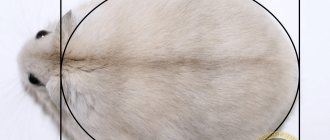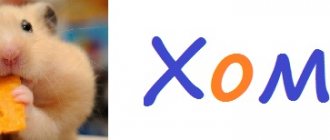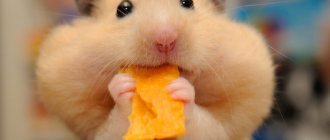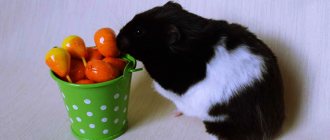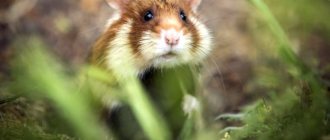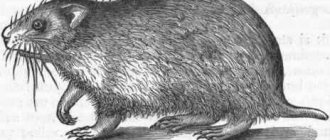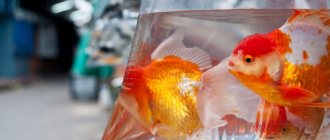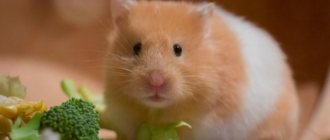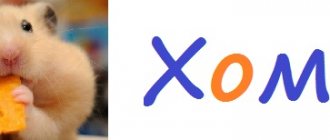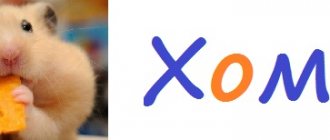Before you bring a pet into your apartment, you need to study as much information as possible about hamsters. You should know everything about the structure of their body, daily routine, and reproductive cycles. Of no small importance is the character of small hamsters, their abilities and phobias. This information about hamsters will help you better understand your furry, speed up the process of adaptation to a new home and quickly make friends with a new family member.
Structural features
Domestic hamsters are tiny mammals that were domesticated by humans centuries ago. Their body, covered with thick fur, consists of a head, a very short neck and a body with limbs and a small tail.
Head structure
You can roughly depict a triangle on the hamster’s face. The lower top is a miniature nose, with cute antennae radiating from it in different directions, which help the animal receive information from the outside world (pressure, air speed, etc.). Above the nose on the left and right are radiant black eyes, and even higher are round, erect ears. By the way, hamsters see rather poorly, but they hear perfectly, so even not very loud sounds can scare them.
A characteristic feature of these pets is their teeth. Hamsters have only 16 of them, with 2 long incisors located below and above, which continue to grow throughout their lives, like other animals from the order Rodents. Hamsters must chew something every day to wear down their front teeth, otherwise their mouth simply won’t close and the animal will die.
Hamster cheeks deserve special admiration. The thrifty fluffy hides the food he hasn’t eaten in them. Homa carries food from the bowl to the house in its cheek pouches. Among the Djungarians they are relatively small, but among the Syrians they are quite spacious; they can hold up to 20 g of grains! The mucous membrane of the cheek pouches is very delicate, so if you feed your hamster rough food, the cheek may become swollen.
Body structure
The body of small rodents is round and covered with thick hair. By its appearance you can judge the health of your pet. The Djungarians have medium-length fur, but the Syrian breed has 2 subspecies. There are ordinary Syrians with short hair and Angoras - very beautiful hamsters with long curls.
The tail of most breeds is short, sometimes it is not even noticeable. And under it, on the ventral side of the body, there are excretory and reproductive organs, and on the sides there are special odorous glands in the form of dark dots, with the help of which the male marks the territory.
Hamsters have a standard set of internal organs for a mammal, but the work of the heart is of particular interest. On average, it beats at a frequency of 300 beats per minute and wears out quickly. Therefore, small rodents do not live long: a 3-year-old animal is already considered old. The frequency of breathing movements depends on the activity at a given time. A sleeping homa takes about 35 breaths per minute, and during exercise or severe stress - 120!
The structure of their legs is also interesting. Many people do not know how many fingers a hamster has.
- there are only 4 toes on the front legs, the fifth does not develop, but can be noticeable as a small rudiment;
- There are five toes on the hind legs.
Hamsters' toes are very tenacious and end in claws, which should be trimmed periodically if the hamster does not gnaw them on its own.
Now you have an idea of what hamsters look like. The body plan is common to all breeds, but the same cannot be said about the size and weight of animals.
How to weigh a hamster?
To weigh this tiny creature you will need:
- kitchen scales;
- cardboard or plastic box;
- seeds or nuts;
- the hamster himself.
First you need to weigh the box itself with several seeds, then put the animal there and use the subtraction method to determine the weight of the animal itself.
The seeds are needed so that the hamster is occupied with them for the time required for weighing, otherwise the fidget may run away.
Reasons for changes in hamster weight
Weight and size
In order to monitor your pet's health, you will need information about how much your hamster weighs. The size of these animals varies greatly depending on the breed. Let's look at several varieties in increasing order of size.
- Roborovsky's dwarf hamster. The maximum height of the animal is 4-5 cm including the tail.
- Long-tailed. The total length of the body is 10 cm, with 6 of them being the tail.
- Taylor. A miniature animal with a body length of 7-8 cm.
- Dzungarik. Another dwarf breed, the size of these fluffies is up to 10 cm including the tail.
- The Campbell's hamster is a larger breed, with individual sizes reaching 12 cm.
- Syrian (aka royal, golden). Quite a large animal with a peach color. Depending on the conditions of detention, the body length reaches from 12 to 18 cm.
- Radde. A large animal up to 28 cm tall. Strong, voracious. It is rarely found as a pet, but thrives quite well in nature.
Weight also differs between breeds. Thus, tiny Taylors weigh on average 8 g, healthy Djungarians - 30 g, and well-fed Syrians reach a weight of 150 g. At birth, dwarf rodents weigh only 1 g, and Syrians from 2 to 4 g (depending on the number of hamsters in the litter).
In the photo, the owners weigh their Campbell hamster:
Siberian hamster
The habitat gave rise to the designation of this breed - Siberia.
They are similar in appearance to Djungarikas, the main difference is in coat color. The Siberian hamster is gray in color; in winter the shade changes to lighter colors.
The average weight of representatives of this breed is 50 grams, and their height does not exceed 8 centimeters. Housing is selected according to the same parameters as for the Djungarian hamster.
Reproduction and development of babies
All hamsters are “precocious” pets, their puberty occurs in 1-2 months. This is almost not reflected externally in females, but in boys the testicles begin to protrude. Sometimes they are so big that you are simply amazed!
Despite early sexual development in hamsters, care must be taken that they do not begin sexual activity too early. This is especially harmful for females, for whom pregnancy can end in death during childbirth. The optimal age for pregnancy is 4-5 months.
Here are some interesting facts about the reproduction of pet hamsters:
- pregnancy lasts about 3 weeks;
- after giving birth, within a week the female is able to become pregnant again;
- one married couple can produce up to 10 offspring per year!
- The number of hamsters in one litter can be from 4 to 15.
Newborn hamsters look very touching and defenseless. They are tiny, bald, with closed eyes. During the first days, the hamsters do not leave the nest, but within a week from the moment of birth they crawl throughout the cage in search of tasty seeds. At 2 weeks their eyes open and fluff appears on their body. And when the animals turn one month old, they are already completely independent.
Babies can be tamed after they open their eyes. Hamsters adapt to human interaction faster than adult hamsters. They are also easier to train.
Children of hamsters are shown in the photo:
Tips for creating a diet for a pregnant female
Pregnant females have very different nutritional needs from normal females. Record short periods of fetal development lead to exhaustion of the mother’s body. The diet should consist of high-calorie food, which at the same time is easily digestible, providing the female with useful vitamins and microelements.
Juicy food is a storehouse of benefits for a hamster
Carrots, pumpkin and zucchini are allowed. You need to give your pet a piece of it every day. You can diversify your diet with dill or other dried herbs. Sprouts of wheat and oat seeds are useful. Vegetables should ideally be from your own garden or at least with a minimum content of harmful substances: it is better to buy them at the market rather than in the supermarket. Before serving, any product must be washed and peeled.
Apples and pears should be excluded from the diet.
Protein food is the basis of a pregnant female’s diet
Protein is essential for the hamster to develop normally. Permitted products include:
- boiled rabbit, chicken or beef without salt;
- baby meat puree from beef or turkey;
- quail or chicken boiled egg;
- low-fat dairy products without chemical additives and dyes with a fat content of no more than 1%.
Dry food is a necessary source of energy
This type of product will provide the animal with additional energy, which is vital for bearing fruit. The main requirement is high quality food, and it can be safely given to an animal in unlimited quantities. It is worth remembering that pregnant animals eat almost 3 times more than usual. A double portion will be needed after a week after mating.
Water - what is important to know?
Many people are concerned about their pet drinking too much during pregnancy, but this is a completely normal occurrence. It is necessary to change the water daily and ensure that the hamster always has it available. To improve the vitamin balance, you can add special liquid supplements for pregnant rodents.
Cognitive Features
For rodents, it is difficult to formulate a general description of their mental capabilities. Here everything depends on the breed, conditions of detention, and the age at which the animal was taught to be handled. The frequency of communication with the owner and the types of games that were offered to the pet are of great importance.
You will be interested to know what kind of memory these fluffies have. Scientists have proven that cheekies are able to remember events, which affects their behavior in a certain situation. For example, some Homas perform a ritual of greeting their owner: they go to the edge of the cage and quietly squeak or rub their paws. At the same time, having noticed a stranger, the same animal hides in the house.
Good memory is also evidenced by the fact that rodents begin to respond to their name over time. You just need to choose a short nickname and repeat it more often.
Sometimes there are talented hamsters that are very trainable. This phenomenon is based not only on the good memory of rodents, but also on their natural curiosity. If you place a tasty treat at the end of the maze, the homa will definitely find it. Next time he will cover the same path even faster, which proves the ability of these pets to learn.
In order for the learning process to go well, you should choose the right time for classes. Animals with a twilight lifestyle do not like to be disturbed in the morning or during the day, but training can begin in the evening.
Dzungarian breed
Dzungarik is the most common inhabitant of apartments. This is a fluffy, cute pet that is fun to watch. The body shape of the jungarik is slightly different from its counterparts. The spine closer to the tail is slightly curved.
The animal is small in size, as a rule, no more than 10 cm. But the cheeks of the dwarf can grow significantly when “replenishing reserves”. While eating, hamsters are interesting and funny to watch. The size of the pet depends on the characteristics of its maintenance and nutrition. The Djungarian hamster weighs no more than 50 g.
The nature of rodents and their habits
Of course, the character of a furry friend depends on the attitude of the owners towards him and on the conditions of detention. But each breed has its own distinctive characteristics. For example, Djungarians are a little wild and vulnerable, Syrians are good-natured and calm, and the Radde hamster is a very willful animal that can sometimes show aggression.
The habits are similar in all rodents, regardless of breed. They like:
- chew on everything - the bars of the cage, your house, toys, etc. If Homa suddenly gets lost in the apartment, then do not be surprised to find chewed wires;
- bury yourself in the litter and hide in the house;
- run away at the first opportunity;
- make food supplies. If you notice that your furry miracle’s bowl is emptying too quickly, this does not mean that the cheeky one ate everything; he probably hid most of the food somewhere;
- run in a wheel. This desire is especially aggravated in the furry in the evenings and at night.
In order for the animal to satisfy its need to chew, there must be a special sharpening stone or at least twigs in its cage, otherwise the homa will begin to sharpen its teeth on its toys. Sometimes a pet has a desire to taste the teeth of its own owners. Remember that he doesn't want to hurt you, he's just experiencing the world that way. Even if your pet has bitten you painfully, you should not punish him or scream, because he may get scared and offended. Hamsters have other fears, which we will talk about in more detail.
Syrian hamster
An adult Syrian can reach 19 centimeters; this subspecies is quite large compared to its counterparts. Representatives of this breed are very loving, they need the attention of their owner. The Syrian hamster is easy to tame because... They love to spend time in their arms and are always happy to communicate.
The average weight of a Syrian is 100-200 grams. Animals of this breed can be short-haired or long-haired.
The Syrian hamster lives from 2 to 3 years. If you are not going to breed them or maintain the population, then it is better not to purchase expensive cages.
For a comfortable stay you need to purchase:
- cage size 40x60;
- wheel ø about 18 centimeters.
Lifestyle
It lives underground, making a deep (up to two meters) and long (up to 8 meters) burrow. Such a dwelling has its own storage room, several nests for rest, up to five, less often ten entrances and exits. In rare cases, a gopher or other burrowing animal may take over the house.
The floor in the hole is lined with straw. Each “door” has its own function:
- Usually a gentle descent into a hole is the way out.
- The more vertical hole is the entrance, through which the animal returns home; it especially likes to use it in times of danger.
- The third tunnel leads to the “storage room”.
During the winter, the hamster plugs all the holes with earth.
The animal is very clean, its house is a standard of cleanliness, it never “soils” in the living area, and especially in the storage area, and uses special latrines for this.
The common hamster is a loner and forms temporary pairs only during the mating season.
In everyday life he is aggressive and pugnacious. If there is a mortal threat, it can even rush at a person.
The animal has a terrifying appearance: it stands on its hind legs, snaps its teeth and moves to attack.
Natural predators for the rodent are foxes, ferrets, stoats, eagles, owls, and eagle owls.
Natural habitat
The hamster is distributed almost everywhere on the Eurasian continent: it can be found in European countries and in some regions of Russia. Mainly prefers to settle in steppes, forest-steppes, meadows, and floodplains. It does not go high into the mountains - the maximum height above sea level where the animal can be found is 1.5 km.
Under some circumstances, it can settle even next to a person: in gardens and vegetable gardens . Particularly large numbers of rodents live in areas of active farming. They say that the animals were even found on the territory of new buildings, which were once fields or vegetable gardens, where the animals adapted to existence.
Food
It feeds mainly on plant foods, but given the opportunity, it will not disdain insects and even small rodents, reptiles and amphibians. In spring and summer it eats leaves and roots of plants, but in winter it switches to a tuber-grain diet.
She mostly goes out hunting at dusk, at which time she stocks up on food for the winter. In the destroyed nests of the common hamster, phenomenal (up to 90 kg) reserves of selected grain were found: peas, wheat, barley, lentils, beans, which he collects from nearby agricultural lands all summer and autumn. On average, one hamster stores up to 10 kg of seeds and root crops for the winter.
Surprisingly, in the “warehouse” the seeds are arranged almost by variety, certainly by type.
At one time, a rodent can carry up to 70 g of grain in its cheek pouches! A loaded hamster can easily cover kilometer-long distances.
